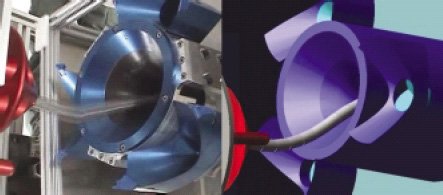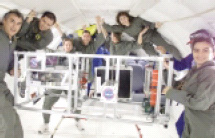One of the most significant challenges facing an engineer during the development of any mechanism destined for space is the difficulty in testing prototypes under micro-gravity conditions. Michigan Aerospace Corp. developed the Autonomous Satellite Docking System (ASDS) to allow a servicing vehicle to perform a soft capture operation on a satellite, imparting a minimum of force during the capture cycle with a maximum of misalignment tolerance between the spacecraft. Capture is made using a flexible soft-dock cable that is extended from the docking spacecraft into a conical receptacle located on the target spacecraft.
The effect of Earth’s gravity invariably causes reactions in the cable that would not be present in space. To properly emulate the behavior of the cable in outer space, Michigan Aerospace performed dynamic computer simulations of the effects of micro-gravity.
Dynamic simulation models interactions between individual components in a mechanism with a set of reaction formulas acting on rigidbody representations of the system components. Under the DARPA (Defense Advanced Research Projects Agency) Orbital Express program, the ASDS mechanism was initially modeled and simulated under microgravity conditions using MSC.ADAMS from MSC.Software. The virtual prototype achieved docking at various approach angles.
To validate the model, the ASDS mechanism was prototyped and tested in the air-bearing floor facility at Marshall Space Flight Center in Huntsville, AL. Once a good correlation between the simulation results and the actual data was shown, the model was used to predict future performance of the ASDS mechanism on several potential spacecraft for the Orbital Express program.
Following this research, under a separate program administered by the U.S. Air Force (USAF) Research Laboratory Space Vehicles Directorate in conjunction with Microcosm, Inc., the dynamic simulations were updated and applied to the problem of capturing and docking with much smaller micro-satellites. The scalability of the ASDS mechanism was not certain because of the lower masses involved, so simulations were run for a range of micro-satellites. The results showed the ASDS system was applicable to multiple sizes of space assets.



